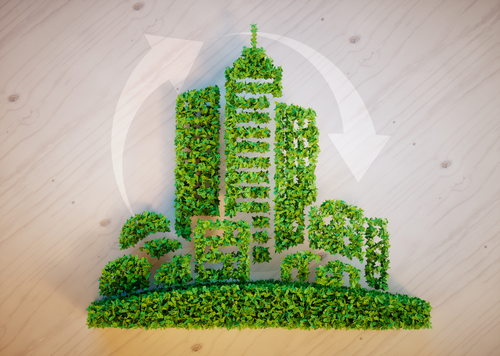Companies seem to be experiencing a sustainability shortfall, despite an uptick in the number of properties seeking Leadership in Energy and Environmental Design, or LEED, and similar accreditations. Although most corporate leaders agree that sustainability merits support, many organizations still don’t have formal sustainability measures in place. However, closing that gap may land squarely in the lap of an unlikely champion: the facility manager.

What makes facility managers poised to lead the sustainability charge? Foremost, they may not be executives, but they’re regularly expected and allowed to make executive decisions when it comes to buildings. Certainly, safety always comes first. But sustainability should be a close second in terms of facility manager priorities.
Another advantage facility managers hold is that they rarely have to answer to governing boards. They can make decisions based on ease of use, prior experience, and existing vendor relationships. For instance, if a facility manager wants to switch to a more sustainable cleaner after researching eco-friendlier products, she typically can. As long as she remains within budget, she has a great deal of influence over the maintenance, cleaning, and restoration practices within her property.
The Facility Manager as a Sustainability Advocate
Many facility managers have begun to realize their importance as sustainability role models. So have vendors.
Plenty of providers pitch their products, services, and technologies based on sustainability factors. For example, facility managers might be more likely to switch from hot-water extraction to dry-polymer carpet cleaning if they learn that the change could save enough water to supply 100 homes in their area.
Ultimately, the importance of sustainability won’t wane. It will only matter more, especially to building occupants. Already, 81% of consumers say they expect businesses to improve their environmental standards. And as eco-conscious Gen Z workers fold more into the professional realm year after year, that expectation will surely grow.
Of course, knowing that sustainability is undergoing a critical evolution is one thing. Understanding how to put sustainable plans into practice is another. If you’re in the facility management world, you can start bringing sustainability into your workflows with the following actions:
1. Replace water-intensive practices.
Water shortages are becoming an increasingly severe problem across the U.S. As droughts continue, facility managers should seek ways to reduce water consumption while keeping properties up to hygiene standards.
As mentioned above, carpet cleaning is one area where facility managers can significantly impact water consumption. Traditional hot-water extraction requires fresh water and produces hundreds of gallons of wastewater. Its replacement could come in any number of dry-polymer carpet cleaning practices. The dry polymer requires little moisture to attract unwanted soil, dirt, and debris before being vacuumed away.
2. Check out vendors’ sustainability metrics.
Many vendors track how their products or services reduce clients’ utility consumption, and this information can help facility managers figure out which vendors are sustainability leaders. Additionally, the right vendor can add points to a facility’s LEED Existing Building scorecard.
What happens if a vendor doesn’t offer a range of sustainability options? That vendor might not be the best partner, at least for the moment. It’s reasonable for a facility manager to shop around, particularly at the end of vendor contracts.
3. Restore office assets when feasible.
At least once every five to 10 years, a facility manager should expect to examine building assets for necessary replacements. Remember, however, that replacing furniture and carpets isn’t always needed. It’s both expensive and wasteful. Tossing unwanted assets like rolls of commercial carpets contributes to already overflowing landfills.
The sustainable answer to the problem of a dated office environment could be to bring objects like upholstered furniture, carpets, and even tile-and-grout floors back to life with restorative processes. Removing stains and odors through a deep, restorative cleaning process can make items feel new. Additionally, it can extend the asset’s life, which is a terrific economic incentive to go green.
Sustainable efforts are a business imperative for facility managers today. Take the lead by making eco-conscientious decisions for your building. In time, those who adopt sustainable measures earlier will differentiate themselves as true visionaries among others in the industry.
Brian Miller is a business support specialist at milliCare Floor & Textile Care. In his role, he supports the company’s franchises and helps them improve their efficiency and productivity as they provide essential services to commercial facilities within their local markets
